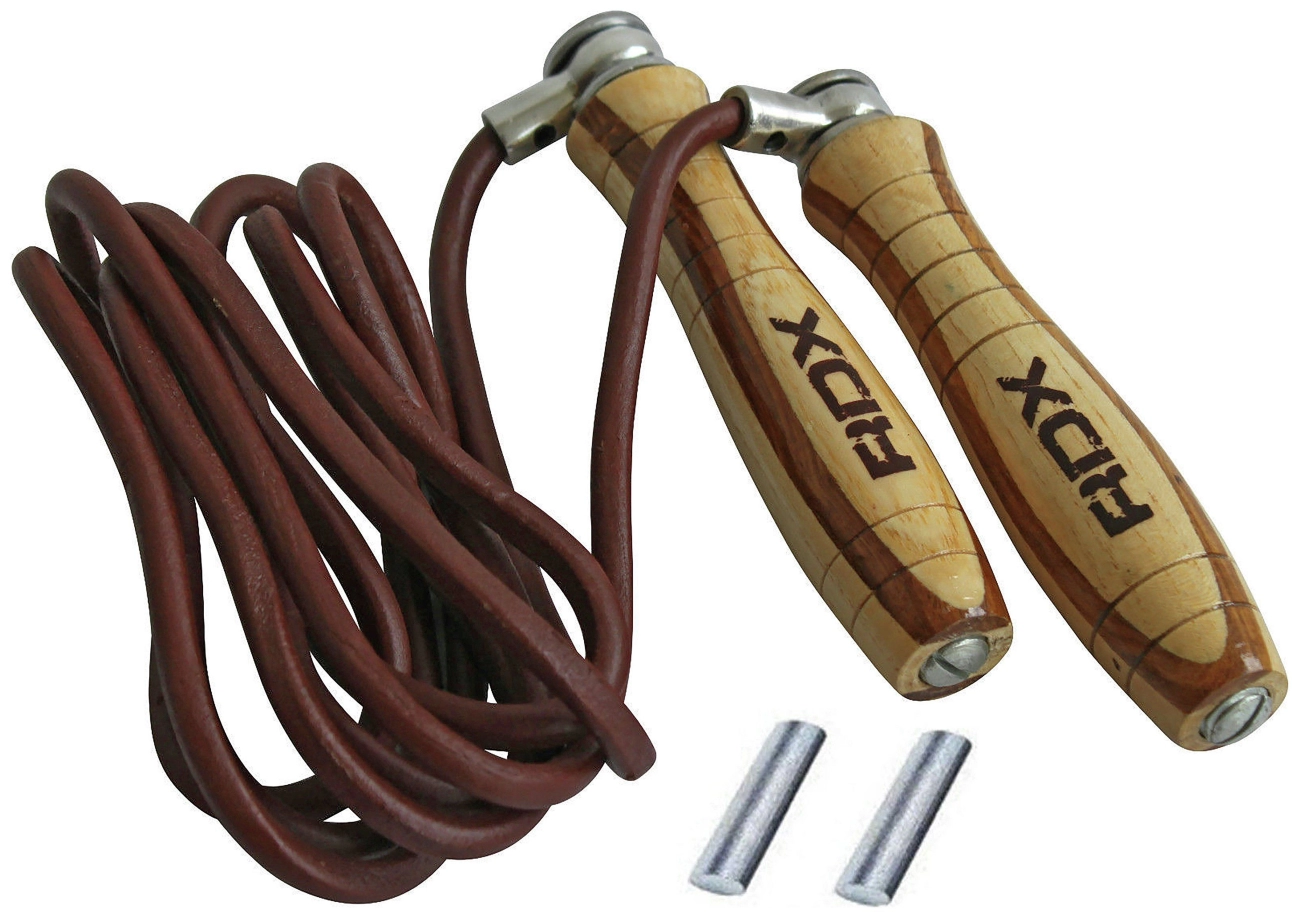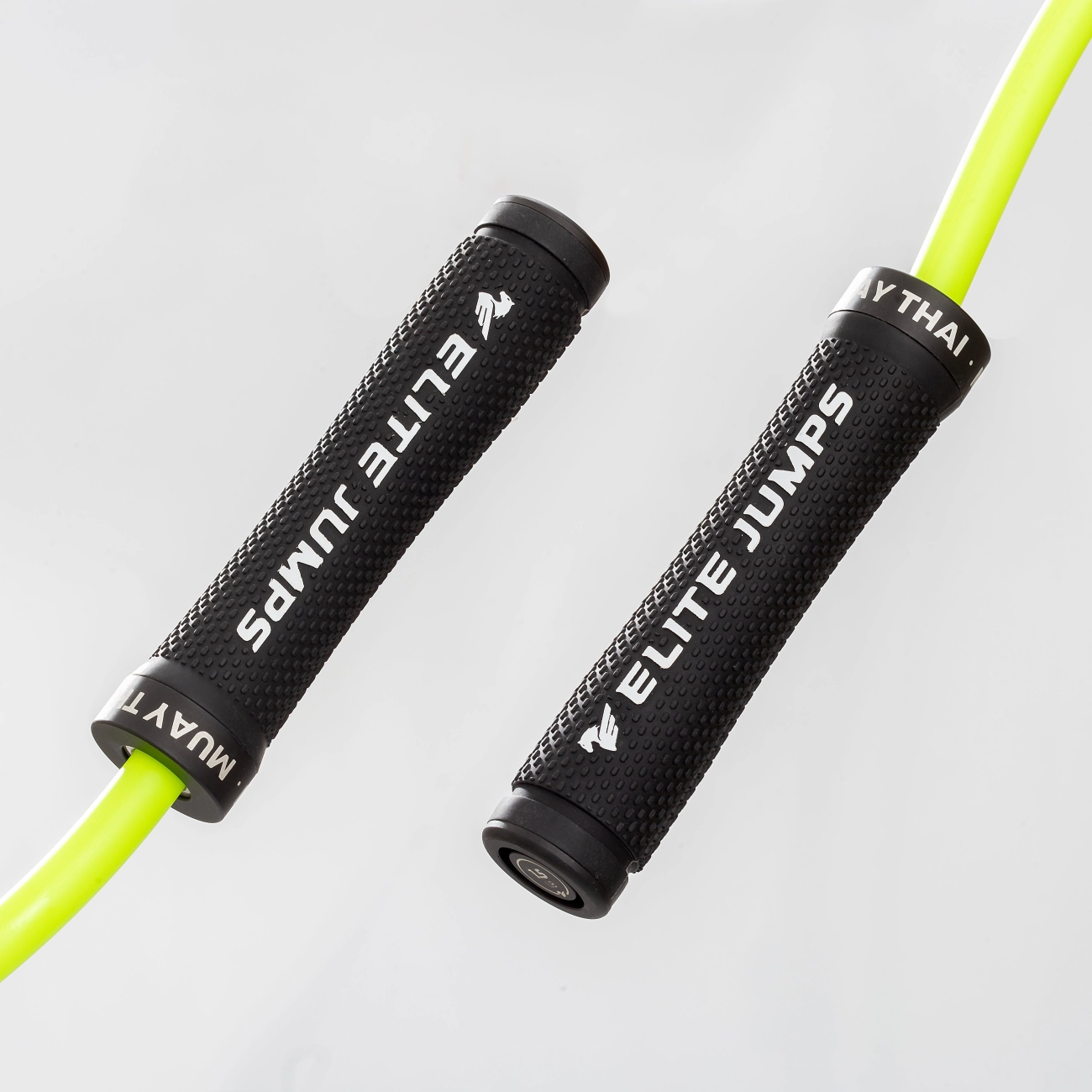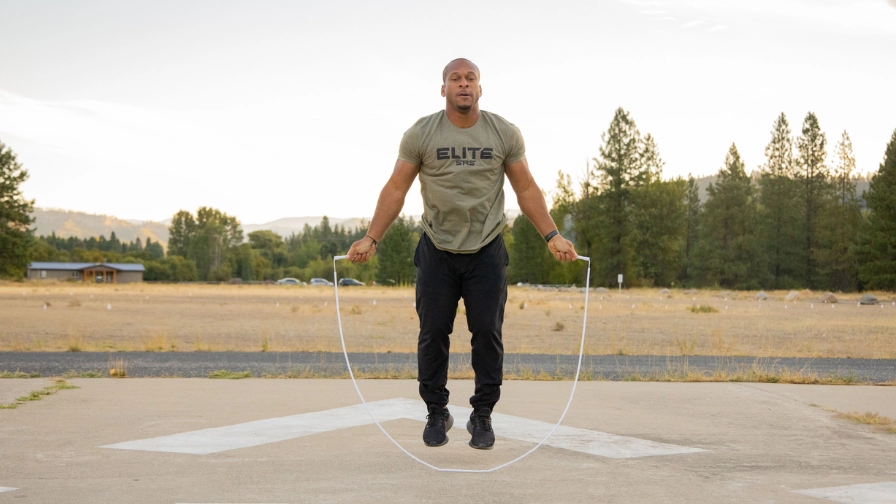If you’ve been wondering, does skipping rope increase vertical jump? you’re not alone. Athletes and fitness enthusiasts alike are always on the lookout for accessible, effective ways to boost explosiveness and leg power. Skipping rope isn’t just a fun cardio tool—it engages multiple muscle groups, improves coordination, and can play a key role in vertical jump training.
But how effective is it really? Can this simple exercise translate into measurable gains in your vertical leap? In this guide, you’ll discover the science behind vertical jump mechanics, how skipping rope fits into the picture, and practical workout tips to help you jump higher. Ready to unlock your next level of athletic performance? Let’s dive in!
Vertical Jump and Key Determinants
What is Vertical Jump Height and How It’s Measured
Vertical jump height is the maximum vertical distance an athlete can raise their body off the ground from a standing position. It’s a crucial indicator of explosive leg power and overall athleticism, especially in sports like basketball, volleyball, and track.
Common ways to measure vertical jump include:
- Vertec device that measures jump height by how high you can touch adjustable vanes
- Force plates tracking the power output during the jump
- Jump mats that time your flight to calculate height
- Smartphone apps using video analysis for convenience
Regardless of method, vertical jump height reflects both muscular strength and neuromuscular coordination.
Muscular Power Explosiveness and Coordination in Vertical Jump
The vertical jump isn’t just about strength. It’s about explosiveness—how fast and powerfully your muscles contract. When you jump, your muscles generate force in a rapid, coordinated manner.
Key factors include:
- Rate of force development (RFD): How quickly your muscles reach peak force.
- Coordination: The synchronized firing of muscles from feet to hips to maximize upward momentum.
- Elastic energy: Stored in tendons and muscles, then released quickly during the jump (stretch-shortening cycle).
This powerful combination is what makes a jumper not just strong, but explosively fast off the ground.
Role of Fast Twitch Muscle Fibers and Plyometric Ability
Fast twitch muscle fibers (Type II fibers) are critical for vertical jump performance. They contract quickly and with great force but tire faster than slow twitch fibers. Athletes with a higher percentage of fast twitch fibers often jump higher.
Plyometric ability is closely linked here. Plyometrics train the explosive stretch-shortening cycle by rapidly lengthening and contracting muscles. This improves:
- Muscle fiber recruitment efficiency
- Neuromuscular responsiveness
- Elastic power output
Developing fast twitch fiber activation through plyometric exercises like skipping rope is a proven way to increase vertical leap explosiveness and height.
The Role of Skipping Rope in Athletic Training for Vertical Jump

Skipping rope is a powerful tool in athletic training, especially when it comes to improving vertical jump performance. It combines plyometric and cardiovascular benefits, making it a versatile exercise to boost explosiveness and endurance at the same time.
Skipping Rope as Plyometric and Cardio Exercise
Jumping rope is more than just a way to get your heart rate up. It acts as a plyometric workout, which means it trains your muscles to generate quick, powerful movements. This is crucial for vertical jump training since explosiveness and fast muscle contraction are key to jumping higher.
At the same time, skipping rope improves cardiovascular fitness. Better cardio means you can train harder and recover faster, which plays a big role in consistent vertical jump progress.
Primary Muscle Groups Engaged
When you’re skipping rope, several key muscles work together:
- Calves: Constant jumping activates and strengthens the calves, essential for the explosive push-off needed in jumps.
- Quadriceps: These help stabilize your knees and power upward motion.
- Glutes: Vital for hip extension, the glutes contribute big time to vertical lift.
- Core: A strong core helps maintain balance and posture, improving your coordination during jumps and rope exercises.
How Skipping Rope Boosts Foot Speed Coordination and Neuromuscular Efficiency
One often overlooked benefit is how jumping rope sharpens your foot speed and coordination. Timing your jumps with the rope requires precise control, which trains your nervous system to react faster and more efficiently. This neuromuscular efficiency means your body becomes better at syncing muscle firing for explosive moves.
In practical terms, improved coordination and quick feet can translate into more fluid, powerful vertical leaps. That’s why many athletes use skipping rope as part of their vertical jump training routine to build leg power and agility simultaneously.
In : Skipping rope isn’t just cardio; it’s a strategic plyometric tool that trains key muscles, enhances foot speed, and boosts neuromuscular control—all essential for increasing your vertical jump.
Scientific Evidence Skipping Rope Increase Vertical Jump
When it comes to increasing vertical jump, plyometric training has proven to be highly effective, and skipping rope is often considered a valuable part of this training style. Several studies highlight the benefits of plyometric exercises in boosting muscular power and explosiveness, which directly impact vertical leap performance.
Key Research on Plyometric Training and Vertical Jump Gains
Plyometric workouts that involve rapid stretching and contracting of muscles, like jump rope exercises, have been shown to improve vertical jump height. Studies consistently find that athletes who include plyometrics in their routines can increase their vertical jump by 3 to 5 inches on average over several weeks. This improvement is due to enhanced fast twitch muscle fiber activation and neuromuscular efficiency—both critical for explosive movements.
Research on Skipping Rope and Vertical Jump Improvement
Specific to skipping rope, research shows it can contribute to vertical jump gains, though usually as part of a broader training program. Skipping rope enhances foot speed, coordination, and calf explosiveness, which are all factors in jumping higher. Some studies report that consistent skipping rope training improves vertical jump by developing the ankle and lower leg muscles, helping athletes generate more power during takeoff.
However, skipping rope alone typically results in moderate gains compared to more intensive plyometric exercises like depth jumps or weighted jump training. It often serves best as a complementary tool rather than a sole training method for increasing vertical jump height.
Skipping Rope vs Other Vertical Jump Training Methods
Here’s a quick look at how skipping rope holds up compared to other popular vertical jump workouts:
- Weight training (squats, deadlifts): Builds overall leg strength, leading to significant vertical leap improvements. Skipping rope offers cardiovascular benefits but less direct strength gains.
- Box jumps and depth jumps: Highly targeted plyometric moves that yield rapid improvements in explosiveness and jump height. Skipping rope lacks the high-impact intensity but improves endurance and footwork.
- Sprinting: Boosts overall power output and fast twitch fiber recruitment. Skipping rope enhances neuromuscular coordination and ankle stiffness but doesn’t develop maximal force like sprinting.
skipping rope is an effective plyometric and coordination exercise that supports vertical jump improvements, especially when combined with strength training and other plyometric drills. It’s particularly valuable for improving foot speed, timing, and muscular endurance, which are essential for consistent jumping performance.
For those looking to invest in quality skipping ropes to include in their jump training, check out the durable 6mm PVC skipping rope designed to deliver both speed and control.
How Skipping Rope Specifically Benefits Vertical Jump Performance

Skipping rope is more than just a cardio tool—it targets several key areas that help increase your vertical jump. Here’s how this simple exercise improves your explosive power and overall jump ability.
Enhances Balance Coordination and Timing
One of the foundational benefits of skipping rope for vertical jump training is improved balance, coordination, and rhythm. The constant timing needed to jump in sync with the rope sharpens your neuromuscular control, which directly translates to better jumping mechanics. This means smoother, more efficient jump attempts where your body moves as one unit, reducing wasted energy.
Boosts Ankle and Calf Explosiveness
Skipping is a high-rep plyometric activity that targets your lower legs—the calves and ankles especially. Because you’re jumping on the balls of your feet repeatedly, you build explosive strength and power in these muscles. Strong, reactive calves contribute heavily to quick takeoffs and greater vertical height by improving your ankle joint stiffness and force production.
Supports Cardiovascular Fitness for Recovery and Volume
Vertical jump training involves intense bouts of explosive effort, and recovery is essential. Skipping rope improves cardiovascular conditioning by keeping your heart rate elevated over time. Better cardiovascular fitness means you can maintain high training volume without fatiguing too quickly, allowing for more jump repeats and better endurance during long practice sessions or competitions.
Provides Plyometric Conditioning Effects
Skipping rope closely mimics plyometric training by using rapid stretch-shortening cycles in muscles. This repeated loading and unloading prepares your muscles and tendons to generate more power quickly, which is essential for vertical jump performance. The plyometric effects of skipping enhance your fast-twitch muscle fibers’ responsiveness, giving you that explosive edge when you push off the ground.
skipping rope develops the exact physical qualities critical for increasing vertical jump: balance, coordination, ankle explosiveness, cardiovascular endurance, and plyometric power. Including rope work in your vertical jump training routine offers a well-rounded boost that supports all stages from takeoff to landing.
Designing a Skipping Rope Workout to Boost Your Vertical Jump
When you want to increase your vertical leap fast, a well-planned skipping rope workout is a game changer. Skipping rope is not just cardio; it builds explosiveness, foot speed, and coordination—all critical for jumping higher. Here’s how you can design a workout that targets those vertical jump gains.
Warm Up and Mobility Recommendations
Before diving into jump rope drills, take 5-10 minutes to warm up your body. This helps prevent injury and primes your muscles for explosive work.
- Dynamic stretches like leg swings, ankle circles, and hip openers
- Light jogging or marching in place for 2-3 minutes
- Calf and Achilles tendon mobilization exercises
Warming up improves your range of motion and prepares your calves, quads, and glutes—key muscle groups for vertical jumping.
Skipping Rope Drills for Power and Explosiveness
Focus on drills that challenge your speed, coordination, and plyometric ability. Here are some effective jump rope exercises that boost vertical jump training:
- Basic Jumps: Steady two-foot jumps build rhythm and calf endurance.
- Double Unders: The rope passes twice per jump, increasing explosiveness and fast twitch fiber engagement.
- High Knees with Rope: Lifts your knee height and increases hip flexor strength and coordination.
- Single Leg Jumps: Improves balance and ankle strength on each leg independently.
Alternate between these drills in short bursts, focusing on quality over quantity to build power and neuromuscular control.
Integrating Skipping Rope with Plyometric and Strength Training
For best results, skipping rope should be part of a broader vertical jump program that includes:
- Plyometric exercises like box jumps, depth jumps, and broad jumps to develop explosive leg power.
- Strength training routines focusing on squats, lunges, and deadlifts to build the muscle force behind your jumps.
- Skipping rope sessions on off days or as a warm-up to improve foot speed and cardiovascular fitness.
Weekly Training Plan Suggestions
To consistently improve your vertical jump using skipping rope, try this schedule:
| Day | Focus | Details |
|---|---|---|
| Monday | Strength Training | Squats, lunges, deadlifts (3 sets of 8-12 reps) |
| Tuesday | Jump Rope Workout + Plyometrics | 15 min rope drills + box jumps, depth jumps |
| Wednesday | Active Recovery | Light jogging, stretching, mobility work |
| Thursday | Skipping Rope Explosiveness Focus | Double unders, high knees, single leg jumps |
| Friday | Strength Training | Lower body emphasis |
| Saturday | Plyometric and Cardio Mix | Skipping rope circuit + sprints |
| Sunday | Rest or Light Mobility | Foam rolling, stretching |
Remember, consistency is key. Gradually increase intensity while paying attention to form and recovery.
By combining targeted skipping rope drills with strength and plyometric training, you’ll create a solid foundation for explosive vertical jump gains. Keep your workouts balanced, stay patient, and watch your vertical leap improve step-by-step.
Choosing the Right Skipping Rope for Vertical Jump Training
When it comes to skipping rope vertical jump training, picking the right rope is crucial to maximize your results. The right rope supports quick, explosive movements that help build leg power, agility, and coordination—key factors for improving your vertical leap.
Rope Length Weight and Material Matter
- Rope length: Make sure your rope fits your height. When you stand on the middle of the rope, the handles should reach your armpits. This helps maintain a smooth rhythm and prevents tripping, which is important when working on explosiveness.
- Weight: A slightly heavier rope adds resistance, helping you develop strength in your calves, ankles, and forearms. But don’t go too heavy—if it slows you down, it can hurt your speed and plyometric benefits. Lightweight ropes are perfect for speed and footwork drills.
- Material: PVC ropes are popular for speed and cardio, while coated wire ropes offer durability and better rotation for double unders or advanced jumps. Beaded jump ropes are great for beginners but less ideal for fast plyometric training.
JumpRopeWholesale Ropes for Vertical Jump Training
JumpRopeWholesale offers a range of skipping ropes designed with athletes in mind, perfect for vertical jump training. Their ropes focus on balance between durability and lightness, enabling fast, explosive workouts that improve coordination and leg power.
Top features of JumpRopeWholesale ropes:
- Adjustable lengths to fit any height exactly
- Smooth, tangle-free rotation bearings for faster turns
- Durable materials like coated wire or quality PVC for consistent speed
- Ergonomic handles for a secure, comfortable grip during explosive workouts
Skipping Rope Maintenance and Replacement Tips
To keep your skipping rope performing well for vertical jump training:
- Store your rope in a dry place—moisture can weaken materials and cause tangling.
- Untangle knots carefully; avoid sharp bends that can damage the wire or PVC.
- Replace worn-out ropes once fraying or handle damage begins, as this impacts rotation speed and workout quality.
- Regularly clean handles and the rope to keep grip secure and friction minimal.
Choosing the right skipping rope and maintaining it ensures you get the plyometric and cardiovascular benefits needed to boost your jump explosiveness effectively. For serious vertical jump training, investing in a quality rope from places like JumpRopeWholesale makes a big difference in your performance.
Common Mistakes in Skipping Rope Vertical Jump Training and How to Avoid Them
Using a skipping rope to increase your vertical jump is effective, but poor technique and training habits can limit results or even cause injury. Here’s how to spot common mistakes and keep your progress on track.
Poor Jumping Technique Reduces Effectiveness
Many people assume skipping is just about jumping over the rope, but for vertical jump gains, form matters. Mistakes like:
- Jumping too high with each rotation (wasting energy)
- Landing stiff or flat-footed
- Using mostly the feet with little ankle or calf engagement
- Not maintaining proper posture and core stability
All these reduce the plyometric benefits of rope jumping, limiting improvements in power, explosiveness, and coordination.
Tip: Focus on quick, controlled jumps that use your ankles and calves to absorb and release energy. Keep your core tight and stay light on the balls of your feet.
Overtraining and Injury Risks
Skipping rope can be high impact on your calves, Achilles tendons, and knees if not managed well. Overdoing it can lead to:
- Shin splints
- Tendonitis
- Plantar fasciitis
- General fatigue lowering training quality
Avoid overtraining by:
- Starting slow and gradually increasing duration and intensity
- Including rest days to allow muscle recovery
- Listening to your body and addressing pain early
Overuse injuries will stall your vertical jump progress and set you back.
Neglecting Other Important Training Elements
Skipping rope is great for improving coordination, speed, and plyometric ability, but jumping higher demands more than rope work alone. Many miss out by ignoring:
- Strength training (squats, deadlifts, lunges) that build muscle power
- Flexibility and mobility routines for better jump mechanics and injury prevention
- Proper recovery including nutrition, sleep, and stretching
To maximize vertical leap gains, think of skipping rope as just one piece of a balanced training plan.
Quick to Avoid Mistakes
- Master proper skipping technique: light, quick jumps using ankles and calves
- Prevent injury: start slow, rest properly, and address pain early
- Don’t rely solely on skipping: integrate strength, flexibility, and recovery
Stick to these guidelines, and skipping rope becomes a reliable part of your vertical jump training without setbacks.
Beyond Skipping Rope Complementary Training for Vertical Jump Gains
While skipping rope is a great tool for boosting your vertical jump, relying on it alone won’t maximize your results. To really increase your vertical leap, you need to combine jump rope with focused strength training, plyometrics, flexibility work, and proper nutrition.
Strength Training for Vertical Jump
Building muscle strength in your legs and core is essential. Squats, deadlifts, and lunges target the major muscle groups that power your jump. They enhance muscular force, which, when combined with the explosiveness gained from skipping rope, leads to higher jumps.
- Squats develop your quads, hamstrings, and glutes
- Deadlifts strengthen your posterior chain, critical for jumping power
- Lunges improve balance and unilateral leg strength, addressing any muscle imbalances
Plyometrics for Explosiveness
Skipping rope is a form of plyometric exercise, but you should also add specific plyometrics like box jumps and depth jumps for more targeted explosive power.
- Box jumps teach your muscles to generate force quickly and improve fast-twitch muscle fiber recruitment
- Depth jumps increase stretch-shortening cycle efficiency for a more powerful takeoff
Flexibility and Mobility Routines
Good flexibility and joint mobility prevent injuries and ensure you can move efficiently during jumps.
- Stretch calves, hamstrings, hip flexors, and ankles regularly
- Mobility work improves your overall range of motion, which enhances jump technique and reduces stiffness
Nutrition and Recovery Tips
Without proper nutrition and rest, your body won’t rebuild stronger.
- Eat enough protein to support muscle repair
- Stay hydrated and maintain balanced electrolytes for muscle function
- Get quality sleep to optimize recovery and hormone balance
- Avoid overtraining — recovery days help muscles grow and prevent injury
Integrating these complementary training elements alongside your skipping rope routine ensures holistic development, helping you increase your vertical leap faster and safer.
For more on proper skipping rope gear and training techniques, check out our jump rope FAQs and explore options like our heavy skipping rope for added resistance training benefits.



